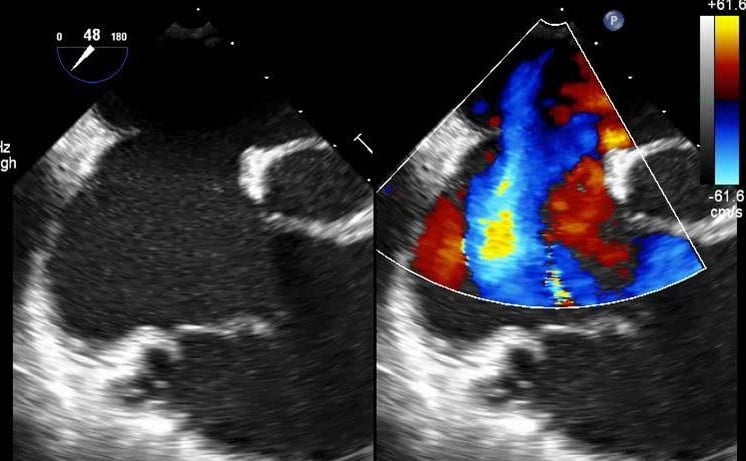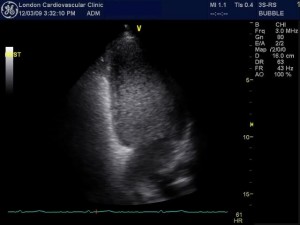What is a bubble contrast echocardiogram?
An echocardiogram (or ‘echo’) is a scan that uses ultrasound (sound waves) to produce pictures of the heart without the use of radiation. A hole in the heart doesn’t show up on a standard echocardiogram, so cardiologists use a bubble contrast echocardiogram instead. This method uses imaging ultrasound and an injection of water with tiny, microscopic bubbles (microbubble contrast).
Who needs a bubble contrast echocardiogram?
If a hole in your heart is suspected – such as Atrial Septal Defect (ASD) or a Patent Foramen Ovale (PFO) – you may need a bubble contrast echocardiography. Normally, the right side of the heart (the low-pressure side) does not communicate with the left (high-pressure) side of the heart. However, in individuals with an ASD or PFO, blood can flow from right to left. This is a congenital defect where the valve separating the left and right heart chambers (atrial septums) stays open after birth – normally the valve closes spontaneously.
What does the procedure involve?
The procedure is very straightforward and can be broken down into some simple steps.
- A normal transthoracic Echocardiogram is performed.
- A small needle will be placed into the vein on the back of your hand.
- Some sterile saline will be drawn up into a syringe and agitated so microscopic bubbles form.
- These are then injected into the vein whilst the imaging takes place.
- The right side of your heart (connected to the venous system) is now easy to see, with the bubbles bright and visible. You may be asked to strain to encourage bubbles to go across.
What do the results mean?
No bubbles should be seen on the left side of your heart. If bubbles do appear, this is a positive test and strongly indicates the presence of a hole in the heart. Your cardiologist will likely wish to perform a Transoesophageal echocardiogram (TOE) to determine this and make decisions about whether closing the defect with a device is appropriate.
What treatment options are there?
If your cardiologist decides you’ll benefit from closing the hole in your heart, you’ll need either of the following procedures (depending on which condition you’re diagnosed with).
These are both minimally invasive surgeries which have a low complication rate – around 1-2%.
Ready to book your bubble contrast echocardiography?
Either give us a call, e-mail or fill out our simple contact form to arrange your consultation with London’s top cardiologist specialists.
Get seen quickly
As we’re a private clinic, your appointments work around you. You’ll soon have the answers you need so you start enjoying life again with a much better prognosis.
Pricing
Insurance
A private bubble contrast echocardiography (also known as a private bubble echo) is covered by most private medical insurance policies, but please contact your insurance company prior to your appointment to obtain your pre-authorisation code to speed things up.
Self-funding
Our price list is available on request and is on display in our waiting area. For an estimation of costs please get in touch.
Why choose London Cardiovascular Clinic?
- We offer a patient-centred approach, so you’ll feel looked after and have all your questions answered
- Choose from our flexible appointment times and get seen at your convenience
- Personalised treatment plans
- Get consultancy & treatment from London’s top cardiologists – each with their own special interests
- You’ll experience a much more welcoming and relaxing experience at our private clinic than you would elsewhere
- Video resources to help you further understand your condition and the procedures involved.




